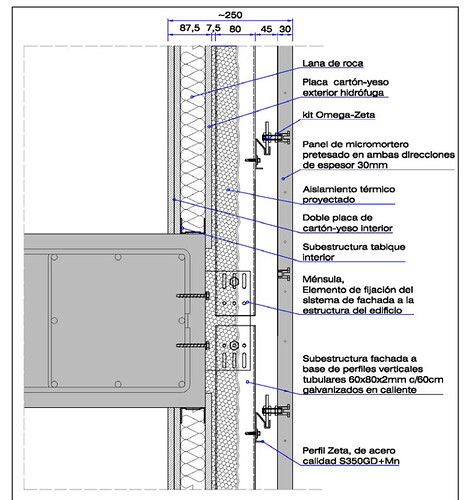Hello, I’m simulating a double skin facade which falls into the “supply air” type and will be circulated in the inner cavity and indoor space, does Honey-bee support this type of DSFs in minimal typical plans?
Hello @MahdieMir, I’m not sure what you meant by supply air type, but I can share with you how I dealt with a naturally ventilated DSF.
I had to model the cavity as a separate room and set it up as a plenum, so that it has no loads except for the infiltration rate.
Special care should be taken about the interior walls construction, since it will be assigned to the surface that separates the room from the ventilated cavity. In my case there is an assymetrical wall assembly, which is why I set up two separated construction sets. If anyone wants to jump in about this is more than welcome, as I did this intuitively and would appreciate some constructive criticism.
DSF shoebox.gh (120.6 KB)
I’ll upload a reference detail for what is being modeled in my shoebox file, only difference is that I used a brick wall on which to apply the insulation later.
Hey @Gspahr ,
Your strategy of using two different construction sets is a perfectly valid way to do it. Asymmetric interior constructions are always going to involve more work to set them up in Grasshopper since Visual Scripting interfaces aren’t very conducive to this detailed level of editing. If I were building a model like this today, I would definitely use the Pollination Rhino Plugin since it’s much easier to make surface-by-surface adjustments in an interface where I can select the geometry I want to edit by clicking on it.
But there are several valid ways to do this type of operation in Grasshopper. For example, you can build the model face-by-face and assign the reversed matching constructions to each of the adjacent faces individually using the ep_constr_ input. Probably the most elegant way to do this in Grasshopper is with the HB Properties by Gide Surface component. With this component, you can still build your Rooms from closed solids but you can just use guide surfaces to customize the properties of the different Faces that make up the Room. It’s still more clunky than the Rhino plugin but it requires a lot fewer components.
Thank you @chris I will give it a try.
I’ve been working on a very large model and it’s proving to be a challenge to implement DSFs… It would be nice to have a specialized component for it to save time.
Hi. I am doing a DSF analysis, but instead of operable windows, air will go in at the bottom and exhaust at the top naturally through buoyancy. How can that be incorporated into the model?
I would use the AirFlowNetwork nodal system.
To be more precise, however, you should calculate the “cp” values it asks for via CFD or get them from literature if you can find them.
However you have to model the top and bottom (the surfaces where you put the arrows) as windows.
This paper can help you:

